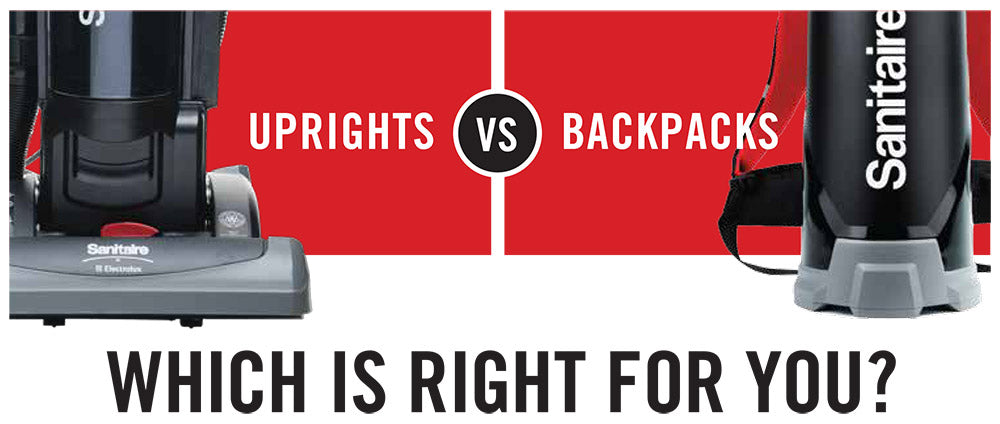
Uprights vs. Backpacks: Which is Right for You?
When determining which vacuums are right for your needs, you first need to assess the environment being cleaned.
A few things to consider:
- How much surface do you need to clean?
- What type of surface do you need to clean?
- How much do you need to maneuver around obstacles?
Upright Vacuums
Uprights use a beater brush to collect dirt in a bag, cup or tank. Some have two motors; one dedicated to the beater brush. Contrary to logic, strong suction can be a negative thing and could actually harm carpet. Uprights work most efficiently in open or mildly cluttered areas and can deep-clean carpet daily without that unwanted damage. To help differentiate which upright vacuums are best for avoiding this damage, the Carpet and Rug Institute (CRI) has set machine standards that cover seven areas of performance. One of these categories is “surface appearance change.” If you are considering an upright for your commercial cleaning fleet, the CRI Seal of Approval is an essential feature to look out for.
Uprights have been the dependable, long lasting, and low cost of ownership choice for over 100 years. The newest models are easy to maintain and they are simple to operate, and revolutionary innovations are continuing to be developed.
Backpack Vacuums
Productivity is the key here. According to the International Sanitary Supply Association’s (ISSA) 540 Cleaning Times, a backpack vacuum can cover as much as five times the square feet of an upright in the same period of time*.
Backpack vacuums are tank-style vacuums worn on the operator’s back like a knapsack. They have no belts or beater bars so there is less to maintain. With the additional tools for the wand, they can clean a variety of areas including overhead vents, upholstery and blinds. But without the beater bar, the backpack will not clean as deeply as an upright.
HEPA (High-efficiency particulate arrestance) filtration is not unique to backpacks but is an added feature that helps keep the environment clean. A HEPA filter removes 99.97% of particles that have a size of 0.3 microns or larger as they pass through the filter. This standard is set by the United States Department of Energy. By “scrubbing” the air there is less dust to re-settle on surfaces and people can breathe easier.
You may also want to look for a backpack with a low dBA. It is important to keep the vacuum motor noise to a minimum for the comfort of those operating the unit, as well as for others working inside the office during business hours. Conversational speech averages around 60dBA. Using a backpack with the a lower dBA is an advantage both for the user and others in the room. Some of today’s backpacks operate at less than 63dBA so conversations are possible even while cleaning is being done.

Leave a comment